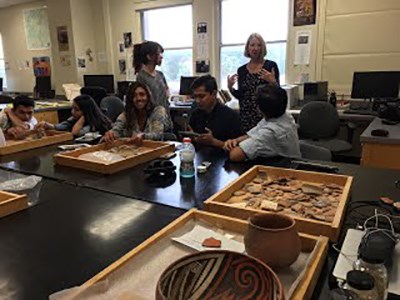Last updated: August 16, 2023
Article
Linking Hispanic Heritage Through Archeology

2. History programs can make visible the identity, needs, and issues of contemporary peoples. The NPS recognized its responsibility to engage with Latino communities across the U.S. and to recognize that their histories contribute to our greater understanding of the American experience. Thus, the LHHTA is just one of several endeavors orchestrated by the NPS to better serve Latino audiences and visitors.
3. Digital history empowers users as authors. Organizers distributed iPads for students to document their experiences with the LHHTA. This practice taught them professional skills such as video production and fostered students’ deep connection with their work. Final digital stories were both cumulative and reflective, a personal narrative on how archeology and cultural heritage affected students.
4. Community partnerships recognize that everyone has something to learn and gain. Though students were the priority, the LHHTA also benefited the educational institutions that contributed to it. Teachers gained a new appreciation for integrating elements of archeology and cultural heritage into their curricula, and the University of Arizona brought a new understanding of NPS professional opportunities to its undergraduate and graduate students.
Back to the History Discover Events Gallery
Back to the Series: Best Practices for History Lessons and History Discovery Events.
